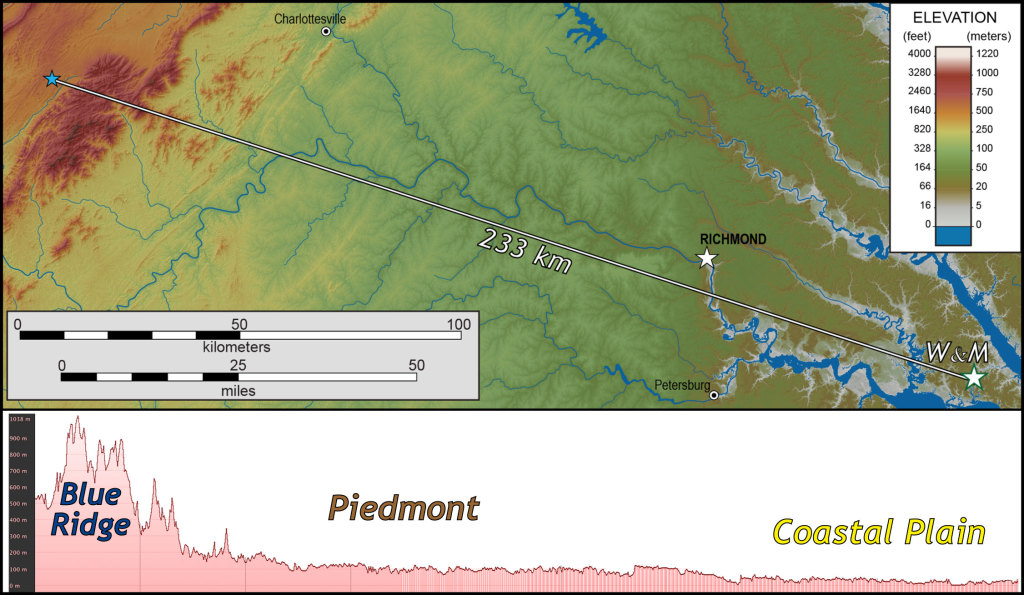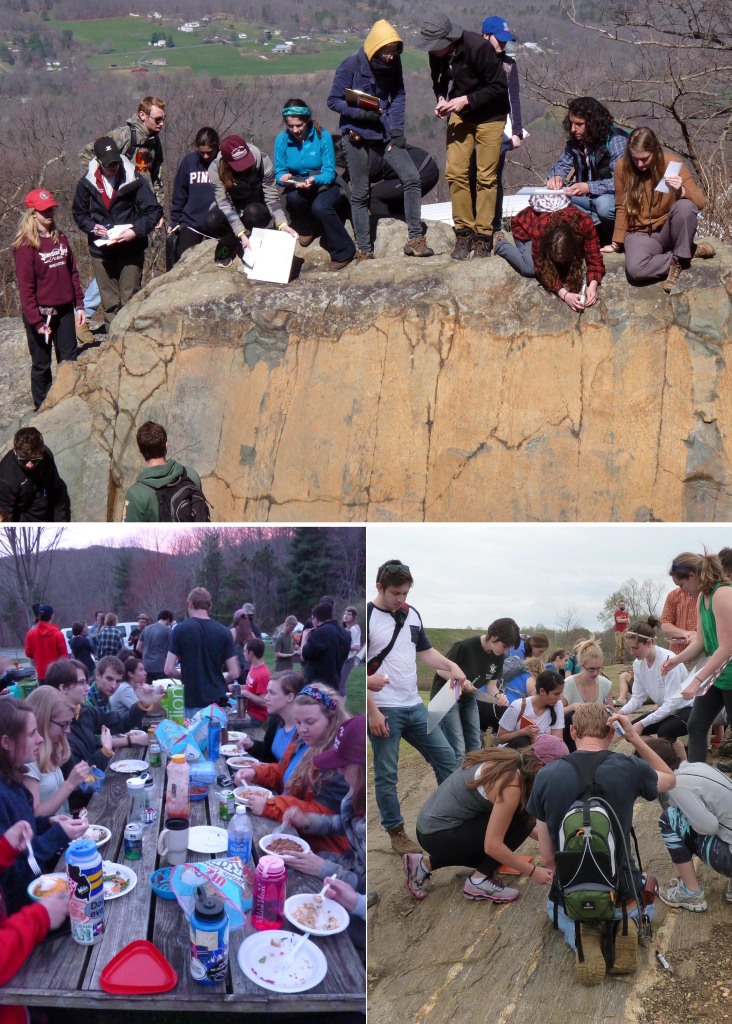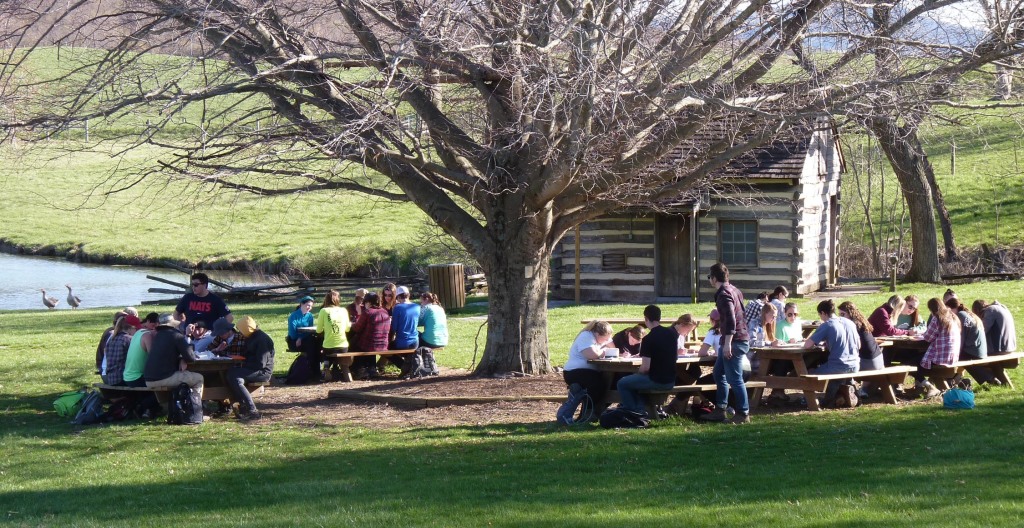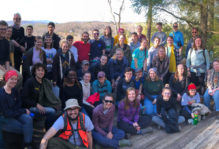Over the Hills and Far Away: The Earth Structure & Dynamics Field Trip 2015
The Earth Structure & Dynamics class field trip is a springtime ritual; last weekend we headed over the hills and far away. At our apogee, we were 233 km west-northwest of campus in Virginia’s Shenandoah Valley. With 43 of us packed into four vans, this was the largest Earth Structure & Dynamics field trip yet. Many times, we gazed along the open road – covering nearly 750 kilometers (470 miles) during our 3-day adventure.

Top: Overview map of the Earth Structure & Dynamics Field 2015 field trip. The small blue star is our most distant stop from William & Mary at McCormick Farm in the Shenandoah Valley, 233 km west-northwest of campus. Below: Google Earth topographic cross section of the profile from the map. Why does the Blue Ridge form high terrain with ~800 m of topographic relief? Click on the image for a larger version.
We camped in the Blue Ridge, at a site nestled between ridges of Cambrian sandstone and Neoproterozoic greenstone. We reveled in the glorious spring weather that varied from a frosty crisp morning to a warm afternoon overflowing with sunshine. We examined rocks and structures in the Piedmont, Blue Ridge Mountains, and Shenandoah Valley. Many times, while upon the outcrops, we wondered, how much there is to know?

Scenes from the field. Top: Measuring geologic structures at the Greenstone Overlook, Blue Ridge Parkway. Bottom Left: Chow time in camp. Bottom Right: Puzzling over the Piedmont at Hidden Rock Park.
On Saturday afternoon, students brought their geologic expertise to the Big Marys Creek watershed, and worked to understand the structural geometry of the western Blue Ridge. I asked the class to construct a cross section that illustrates the geology along our route. In typical William & Mary fashion, students worked cooperatively (and late into the evening) to complete a geologic cross section based on their field observations from earlier in the day.

William & Mary geologists at work on a delightful Saturday afternoon at McCormick Farm in Virginia’s Shenandoah Valley.
Our field observations revealed a fault at the western edge of the Blue Ridge Mountains. Broken and brecciated rocks are common here, and older rocks to the southeast of the fault are tilted, with a normal stratigraphic order, whereas to the northwest of the fault, younger strata are overturned. Curiously, this fault was not recognized or mapped on the 1993 Geologic Map of Virginia – it only took W&M undergraduates an afternoon to properly sort things out. But a question remains – is this fault a major crustal boundary in the central Appalachians or is it a minor, local structure?

Geologic interpretation at the western edge of the Blue Ridge Mountains. Different colors and labels are individual geologic units. Note the southeast-dipping fault that disrupts the stratigraphy. Is this a major or minor fault in the Appalachian orogen?
In the Geology department at William & Mary, we emphasize active learning – doing geology in the field is about as active as it gets. Fieldwork is a messy process (both literally and intellectually), but engaging and fun work. These weekend field trips, over the hills and far away (from campus) invariably get W&M geologists discussing things they really ought to know.
Comments are currently closed. Comments are closed on all posts older than one year, and for those in our archive.




We are trapped in structure class!! Please send help!! Great post, Chuck! Wish we were in the field right now.